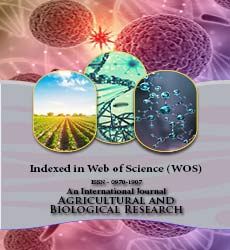Agricultural and Biological Research
RNI # 24/103/2012-R1
Gezahagn Goshu Abate*
Soil sampling is a fundamental practice in soil science, essential for assessing soil fertility, nutrient availability, and overall soil health. This paper provides an in-depth overview of soil sampling techniques, their significance, and the processes involved in sample collection and laboratory preparation. It highlights the role of soil in supporting plant growth by providing essential nutrients and water, as well as its critical functions in ecosystems.
Understanding the methods of soil sampling is key for accurate soil testing, which in turn aids in efficient soil management, crop nutrition, and environmental sustainability. The paper discusses various types of soil sampling, including pedological sampling, which focuses on soil formation and profile analysis, and fertility assessment sampling, which examines the nutrient status within the root zone. Different approaches to sampling are outlined, such as shallow surface sampling, deep subsurface sampling, and stratified sampling, all of which are tailored to specific soil characteristics and management needs. A key focus is placed on the importance of selecting representative sample areas within a field to avoid errors caused by non-homogeneous soil conditions, such as varying soil types, management practices, and crop growth patterns.
The manuscript further explains the procedures involved in collecting and preparing soil samples, emphasizing the need for proper tools, techniques, and sample handling to ensure accurate laboratory results. The preparation process includes drying, grinding, sieving, and storing samples, with careful attention to maintaining sample integrity. Special attention is also given to the sampling of salt-affected soils, highlighting unique challenges and methods for evaluating gypsum requirements and soil reclamation.
Soil testing, followed by precise analysis, enables accurate fertilizer recommendations, helping farmers optimize nutrient use, reduce costs, and minimize environmental impacts. This paper underscores the necessity of consistent, accurate soil sampling as part of a sustainable agricultural practice that supports crop productivity and environmental stewardship.
